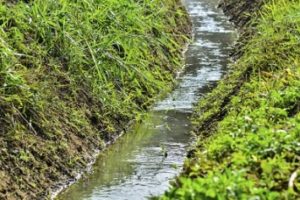In an action that parallels EPA’s rulemaking to write a new definition of the Clean Water Act (CWA) term waters of the United States (WOTUS), the Agency is soliciting comments on whether pollutant discharges into groundwater that has a hydrologic connection to WOTUS are subject to CWA regulation.

In its Federal Register (FR) notice, the EPA takes no position on the matter; instead, the Agency describes EPA’s “previous statement” regarding jurisdiction, lists multiple court rulings that disagree on whether such discharges are CWA jurisdictional, and raises specific issues for which it would like feedback.
Case-Specific Determinations
Multiple CWA provisions would be affected by any EPA jurisdictional interpretation of discharges to groundwater that reach WOTUS. But the major impact would likely be either an expansion or a diminution of entities that would need permits under CWA’s National Pollutant Discharge Elimination System (NPDES). The EPA says it has “previously” held that pollutants discharged from point sources that reach jurisdictional surface waters via groundwater or other subsurface flow that has a direct hydrologic connection to the jurisdictional water may be subject to CWA permitting requirements; but the Agency did not previously state that CWA permits would be required in all cases.
The EPA goes on to cite several of its CWA rulemakings where it made conflicting statements, asserting in one place that discharges to groundwater are certainly subject to permitting and in others that they are not. These statements were collateral to the rulemaking and so did not constitute a final Agency determination. In one rule addressing concentrated animal feeding operations (CAFOs), the Agency said determinations of whether discharges to groundwater are subject to permitting are to be made on a case-by-case basis. In making such determinations, the EPA has stated that relevant evidence includes the time it takes for a pollutant to move to surface waters, the distance it travels, and its traceability to the point source. These factors are affected by other site-specific factors, such as geology, flow, and slope.
Given the Agency’s previous statements and inconsistent court opinions on jurisdiction, there is no clarity or certainty about where the EPA now stands.
Questions on State Role
The Agency is requesting comment on the following topics:
- Whether the EPA should review and potentially revise its previous statements concerning the applicability of the CWA NPDES permit program to pollutant discharges from point sources that reach jurisdictional surface waters via groundwater or other subsurface flow that has a direct hydrologic connection to a jurisdictional surface water;
- Whether subjecting such releases to CWA permitting is consistent with the text, structure, and purposes of the CWA;
- Whether the EPA should regulate such releases via NPDES permitting or use other CWA provisions;
- Whether the states are overseeing these releases; for example, under state programs that implement EPA’s underground injection control regulations pursuant to the Safe Drinking Water Act;
- Whether the EPA should clarify its previous statements concerning pollutant discharges to groundwater with a direct hydrologic connection to jurisdictional water to provide additional certainty for the public and the regulated community;
- Which issues should be considered if further clarification is undertaken, including, for example, the consequences of asserting CWA jurisdiction over certain releases to groundwater or determining that no such jurisdiction exists; and
- Which format or process the EPA should use to revise or clarify its previous statements (e.g.,through memoranda, guidance, or rulemaking) if the Agency decides to pursue further action.
EPA’s request for comment is in the February 20, 2018, FR.
